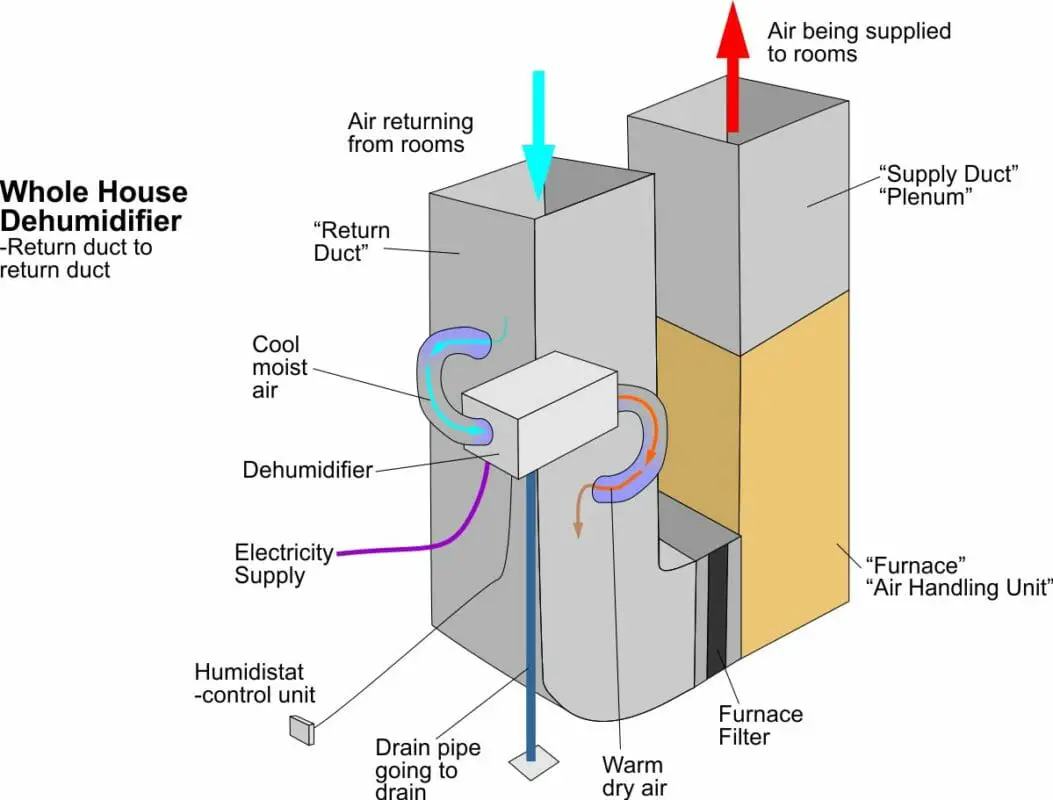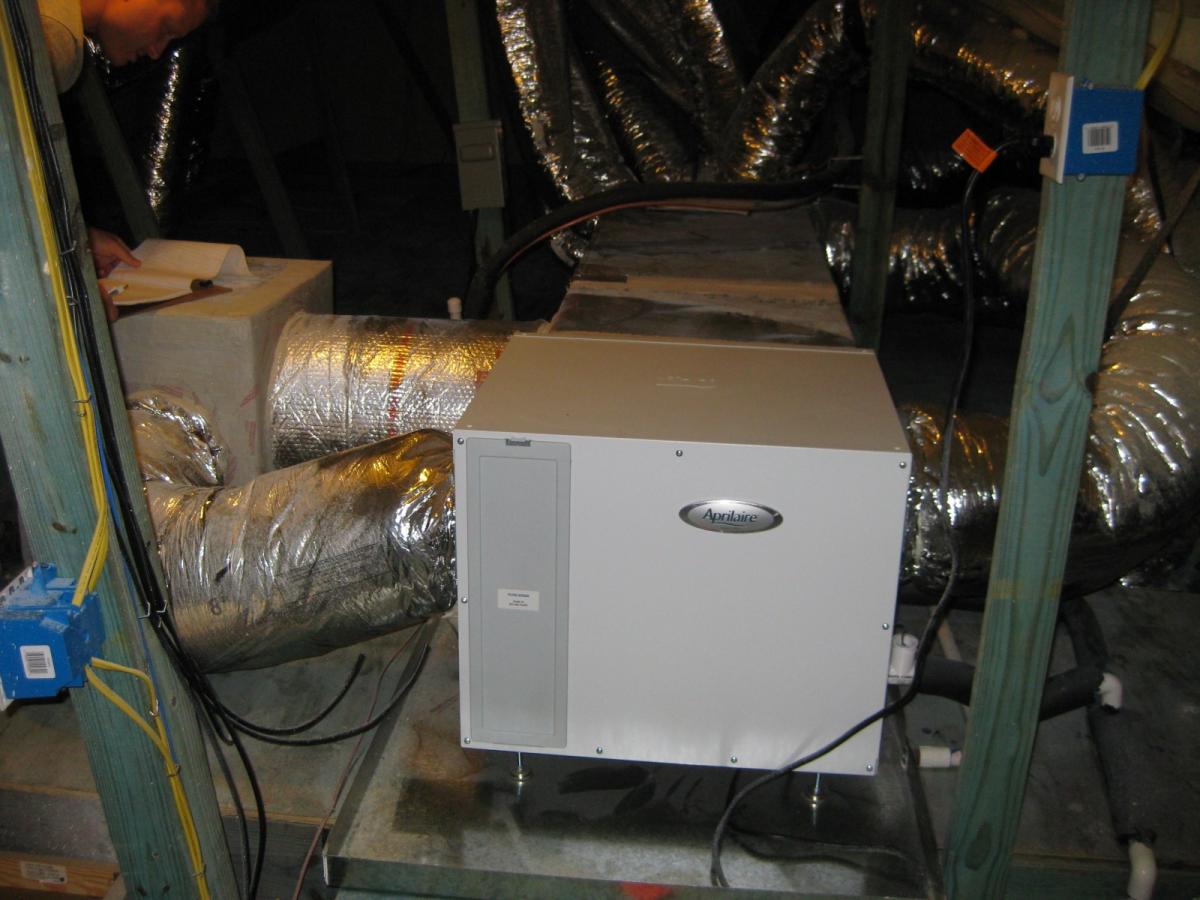The Power Of Control: Understanding Whole House Dehumidifiers
The Power of Control: Understanding Whole House Dehumidifiers
Related Articles: The Power of Control: Understanding Whole House Dehumidifiers
Introduction
In this auspicious occasion, we are delighted to delve into the intriguing topic related to The Power of Control: Understanding Whole House Dehumidifiers. Let’s weave interesting information and offer fresh perspectives to the readers.
Table of Content
The Power of Control: Understanding Whole House Dehumidifiers

Humidity, the invisible force that can make or break indoor comfort, is a constant concern for many homeowners. While a certain level of humidity is necessary for a healthy indoor environment, excessive moisture can lead to a myriad of problems, from mold growth and musty odors to structural damage and respiratory issues. This is where whole house dehumidifiers step in, offering a comprehensive solution to control humidity levels throughout the entire home.
Beyond the Basics: Understanding the Dehumidification Process
Whole house dehumidifiers work by drawing air from the home’s interior, passing it through a series of coils chilled below the dew point. As the warm, humid air passes over the coils, the moisture condenses into water droplets, which are collected in a reservoir or drained away. The now-dehumidified air is then circulated back into the home, creating a drier and more comfortable atmosphere.
Benefits Beyond Comfort: Why Whole House Dehumidifiers Matter
While improving indoor comfort is a significant benefit, the advantages of whole house dehumidifiers extend far beyond simply reducing humidity.
-
Mold and Mildew Prevention: Excessive humidity creates the ideal breeding ground for mold and mildew, which can pose serious health risks, especially for those with allergies or respiratory issues. Whole house dehumidifiers effectively control humidity levels, minimizing the risk of mold growth and creating a healthier indoor environment.
-
Structural Integrity: High humidity can lead to wood rot, warping, and other structural damage, ultimately impacting the longevity of your home. By maintaining optimal humidity levels, whole house dehumidifiers contribute to the structural integrity of your home, protecting your investment for years to come.
-
Reduced Allergens: Dust mites, a common allergen, thrive in humid environments. Whole house dehumidifiers by reducing humidity levels, create a less hospitable environment for dust mites, minimizing their presence and improving air quality for allergy sufferers.
-
Improved Air Quality: Excessive humidity can also lead to the growth of bacteria and other airborne contaminants. By reducing moisture levels, whole house dehumidifiers contribute to cleaner air, promoting a healthier and more comfortable living environment.
-
Enhanced Energy Efficiency: In humid climates, running your air conditioner can be less effective in cooling your home if humidity levels are high. By reducing humidity, whole house dehumidifiers allow your air conditioner to operate more efficiently, leading to lower energy consumption and reduced utility bills.
Types of Whole House Dehumidifiers: Choosing the Right System
There are two primary types of whole house dehumidifiers:
-
Refrigerant Dehumidifiers: These are the most common type, utilizing a refrigeration cycle to cool the air and condense moisture. They are generally efficient and reliable, offering a high dehumidification capacity.
-
Desiccant Dehumidifiers: These dehumidifiers use a desiccant material, like silica gel, to absorb moisture from the air. They are often used in environments with very high humidity or where the temperature is below the dew point, as they can operate at lower temperatures than refrigerant dehumidifiers.
The best type of whole house dehumidifier for your home depends on various factors, including the size of your home, the humidity levels you need to control, and your budget.
Installation and Maintenance: Ensuring Optimal Performance
Whole house dehumidifiers are typically installed in a central location, such as the basement or a utility room, and connected to the home’s ductwork. It is recommended to consult with a qualified HVAC professional for proper installation and ensure the system is appropriately sized for your home.
Regular maintenance is crucial for optimal performance and longevity. This includes:
-
Cleaning the air filter: The air filter should be cleaned or replaced regularly to prevent dust and debris from accumulating and hindering airflow.
-
Checking the condensate drain: Ensure the condensate drain is clear and free of clogs to prevent water from backing up and causing damage.
-
Inspecting the coils: Regularly inspect the coils for dirt and grime, which can reduce efficiency. Cleaning them with a soft brush and a mild detergent can help restore performance.
-
Monitoring the humidity levels: Regularly monitor the humidity levels in your home to ensure the dehumidifier is operating effectively and adjusting the settings as needed.
FAQs: Addressing Common Concerns
Q: How do I determine the right size dehumidifier for my home?
A: The size of the dehumidifier you need depends on the size of your home and the humidity levels you need to control. A qualified HVAC professional can help you determine the right size for your needs.
Q: How much does it cost to run a whole house dehumidifier?
A: The cost of running a whole house dehumidifier varies depending on the size of the unit, the humidity levels in your home, and the price of electricity. However, the energy savings from running your air conditioner more efficiently can often offset the cost of operating the dehumidifier.
Q: Can a whole house dehumidifier cause dry air?
A: While the goal is to reduce humidity, it is important to maintain a comfortable relative humidity level (around 30-50%). If the air becomes too dry, you can use a humidifier to add moisture back into the air.
Q: What are the potential downsides of whole house dehumidifiers?
A: The main downside is the initial cost of installation. However, the long-term benefits, including improved health, reduced energy costs, and protection of your home, often outweigh the initial investment.
Tips for Optimizing Your Whole House Dehumidifier
-
Consider a programmable model: Programmable dehumidifiers allow you to set specific humidity levels and schedules, optimizing their performance and energy efficiency.
-
Ensure proper ventilation: Adequate ventilation is crucial for maintaining healthy humidity levels. Open windows and doors for fresh air circulation, especially after showering or cooking.
-
Address moisture sources: Identify and address any sources of moisture in your home, such as leaky pipes, dripping faucets, or poorly ventilated areas.
Conclusion: Creating a Healthier and More Comfortable Home
Whole house dehumidifiers offer a comprehensive solution to control humidity levels, creating a healthier, more comfortable, and more energy-efficient living environment. By understanding the benefits, choosing the right system, and implementing proper maintenance practices, homeowners can effectively combat the challenges of excessive humidity and enjoy the numerous advantages of a well-controlled indoor environment.








Closure
Thus, we hope this article has provided valuable insights into The Power of Control: Understanding Whole House Dehumidifiers. We appreciate your attention to our article. See you in our next article!
You may also like
Recent Posts
- Shaping The Homes Of Tomorrow: Home Decor Trends For 2025
- Navigating The Evolving Landscape Of Home Decor Trends: A Comprehensive Guide
- Weaving History And Home: A Guide To Unique Vintage Farmhouse Decor
- The Enduring Appeal Of Wooden Duck Home Decor: A Timeless Symbol Of Nature And Serenity
- Beyond The Ordinary: A Guide To Unique Home Decor Accessories
- Navigating The Fast Fashion Landscape: Exploring Alternatives To SHEIN
- A Global Network Of Home Improvement: The Reach Of The Home Depot
- Finding The Perfect Pieces: A Guide To Home Decor Shopping
Leave a Reply